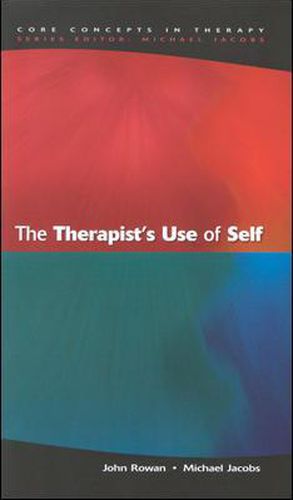Readings Newsletter
Become a Readings Member to make your shopping experience even easier.
Sign in or sign up for free!
You’re not far away from qualifying for FREE standard shipping within Australia
You’ve qualified for FREE standard shipping within Australia
The cart is loading…






This book is part of the series Core Concepts in Therapy, which takes important concepts in psychotherapy and counselling (which we call collectively therapy), and asks how they are used in different orientations. For this purpose each volume is written by two authors from contrasting approaches. The present volume deals with what is perhaps the central question in therapy - who is the therapist? And how does that actually come across and manifest itself in the therapeutic relationship? A good deal of the thinking about this in psychoanalysis has come under the heading of countertransference. Much of the thinking in the humanistic approaches has come under such headings as empathy, genuineness, nonpossessive warmth, presence, personhood and the like. These two streams of thinking about the therapist’s own self provide much material for the bulk of the book - but other aspects of the therapist also enter the picture, including the way a therapist is trained, and uses supervision, in order to make fuller use of her or his own reactions and responses and experience in working with any one client. The book is aimed primarily at counsellors and psychotherapists, or trainees in these disciplines. It has been written in a way that should be accessible to students at all levels, but also it should be of particular value to existing practitioners with an interest in the problems of integration.
$9.00 standard shipping within Australia
FREE standard shipping within Australia for orders over $100.00
Express & International shipping calculated at checkout
This book is part of the series Core Concepts in Therapy, which takes important concepts in psychotherapy and counselling (which we call collectively therapy), and asks how they are used in different orientations. For this purpose each volume is written by two authors from contrasting approaches. The present volume deals with what is perhaps the central question in therapy - who is the therapist? And how does that actually come across and manifest itself in the therapeutic relationship? A good deal of the thinking about this in psychoanalysis has come under the heading of countertransference. Much of the thinking in the humanistic approaches has come under such headings as empathy, genuineness, nonpossessive warmth, presence, personhood and the like. These two streams of thinking about the therapist’s own self provide much material for the bulk of the book - but other aspects of the therapist also enter the picture, including the way a therapist is trained, and uses supervision, in order to make fuller use of her or his own reactions and responses and experience in working with any one client. The book is aimed primarily at counsellors and psychotherapists, or trainees in these disciplines. It has been written in a way that should be accessible to students at all levels, but also it should be of particular value to existing practitioners with an interest in the problems of integration.